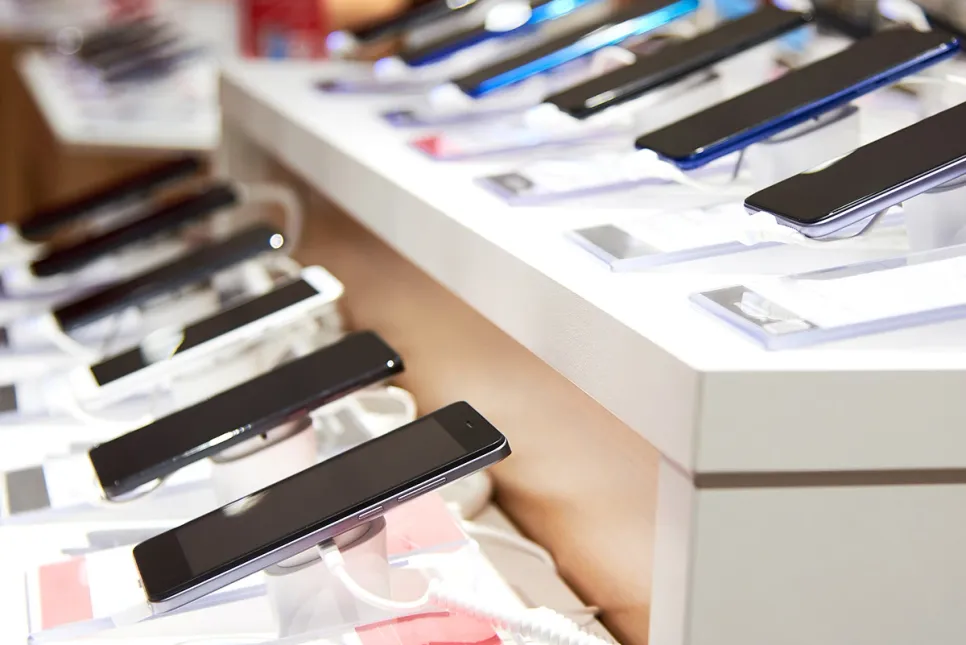Energy Wastage and Vertical Solutions to Drive Surge in Industrial Smart Buildings Deployments
Juniper Research forecasts that global industrial smart building deployments will grow from 26 million in 2025 to over 165 million by 2030.

Smartphone shipments into Europe (excluding Russia) declined by 2% in 1Q25 to 32.4 million units, according to Canalys. The drop was largely caused by sluggish entry-level demand.
Samsung was Europe’s largest smartphone vendor in Q1 as its shipments marginally grew to 12.2 million units. A record-high volume of the Galaxy S series was critical to Samsung’s performance, and it also contributed to the vendor reaching its highest-ever quarterly average sales price (ASP) in Europe. Apple finished second on the ranking table in Q2 as iPhone shipments grew by a strong 10% to 8.0 million units, boosted by strong end-user demand and the initial sales-in-effect from iPhone 16e. Xiaomi delivered a resilient Q1 despite poor demand in its target segments, with its shipments only declining by 2% to 5.3 million units. 1Q25 marks Xiaomi’s twentieth consecutive quarter in Europe’s top three-ranking vendors. Motorola and Google rounded the top five, shipping 1.7 million and 0.9 million units, respectively. Q1 also marks Google’s first appearance on the quarterly top five ranking vendors' table.
“Many smartphone vendors in Europe have had a tough start to 2025, particularly for those dependent upon selling devices priced below €400,” said Runar Bjørhovde, Senior Analyst at Canalys. “Following last year’s mild recovery, several vendors overestimated end-user demand toward the end of 4Q24, resulting in many heading into 1Q25 with excess channel inventory. Entry-level demand has been sluggish in Q1 as well, partly a result of replacement demand saturation being pulled forward last year, with emerging competition driving aggressive promotions. 1Q25 had the lowest volume of sub-€200 priced devices shipped in over a decade, highlighting the challenging demand environment. Xiaomi and Motorola were the most impacted vendors on the ranking table, although it has been even tougher for many vendors beyond the top five.”
High-end demand continues to boom in Europe, driven by Apple and Samsung, with the share of devices priced above €800 reaching a record-high 32%. Apple was the big winner in Q1, growing its shipments by double digits despite heading into Q1 with significant inventory levels of the legacy iPhone 13 and 14 that were discontinued in December 2024 following the USB-C directive. Robust consumer and enterprise demand for iPhones continues to benefit Apple in Europe, although regulatory hurdles and fines remain a headache to its wider business in the region.
“Samsung delivered its highest quarterly premium volume ever, boosted by a strong reception of the Galaxy S25 series,” noted Bjørhovde. “Galaxy S-series shipments grew 12% compared to 1Q24, boosted by aggressive promotions used across the channel to encourage consumers to refresh and upgrade their devices, including, for example, trade-in discounts, device bundles, complementary spec upgrades, and outright discounts. With the recent launch of the Galaxy Club, which guarantees customers 50% trade-in value 12 to 15 months after purchase, Samsung aims to drive quicker upgrade cycles in its most loyal user base.”
Partners in the European smartphone channel are increasingly concerned about the market’s long-term competitive situation, with more market share and influence shifting further toward Apple and Samsung. Demand and cost pressures will only increase for all vendors as regulations, such as eco-design and battery directives, will challenge operating margins further and potentially reduce the total addressable market, particularly in the fiercely competitive budget segments. Canalys forecasts the European smartphone market to decline by 3% in 2025, but a return to 1% growth in 2026 should relieve vendors. Prioritizing operational efficiency and profitability should be a key overarching focus across all vendors to ensure they can maintain the consistency needed to succeed over time. Additionally, understanding how consumer behavior and buying journeys are evolving is critical to finding the most effective strategies and tactics to win new customers in a fiercely competitive environment where it is getting harder to differentiate and capture end-user curiosity.